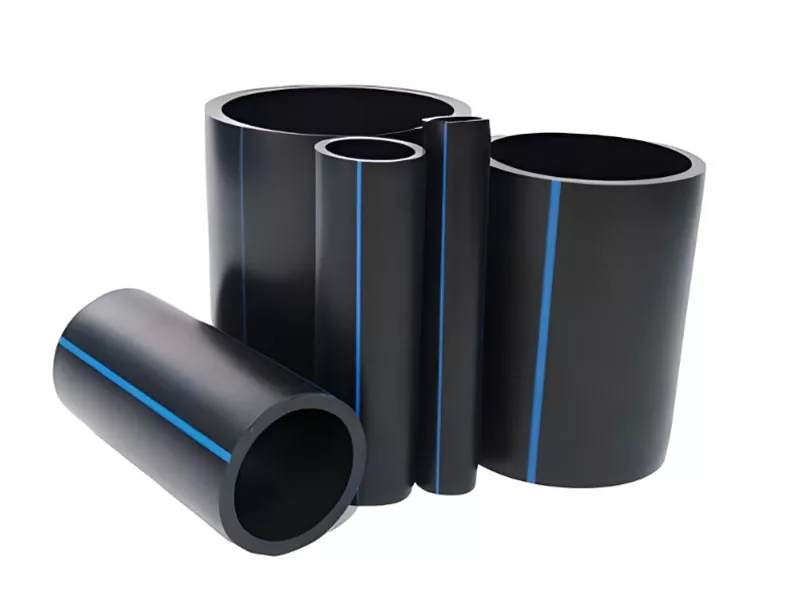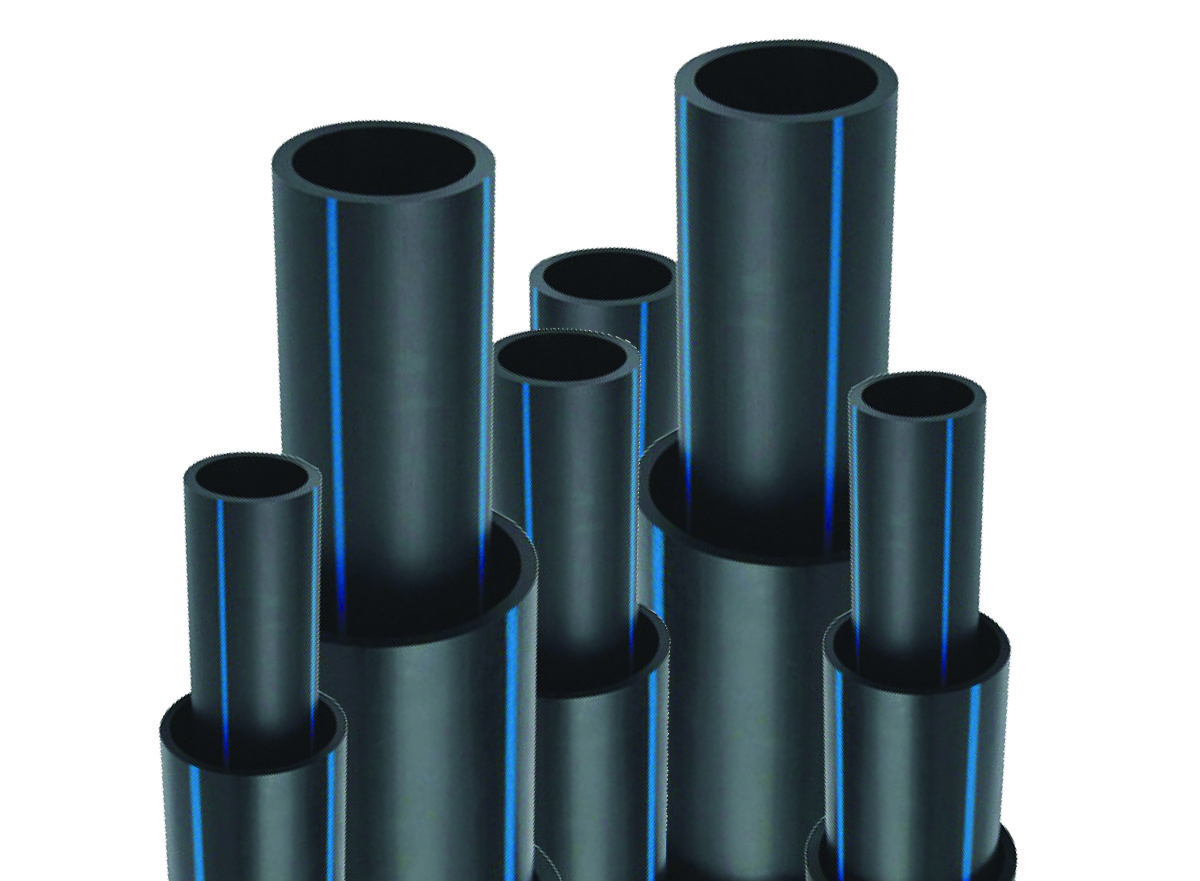Key Insights of custom hdpe pipe manufacturing Midland TX for Engineering Projects
Wiki Article
Check Out the Manufacturing Process Behind High-Quality HDPE Pipeline and Its Applications
The production process of high-grade HDPE pipelines is elaborate and methodical. It begins with the selection of basic materials that improve performance. Following this, ethylene undergoes polymerization to develop resin, which is then formed through extrusion. Quality control is vital, ensuring that the final item satisfies strict standards. The journey of HDPE pipes doesn't end with manufacturing. Their applications across different markets disclose a wider value worth checking out.Comprehending HDPE: Features and Advantages

High-density polyethylene (HDPE) is a functional polycarbonate recognized for its toughness and resistance to numerous ecological aspects. This material displays superb tensile strength, making it ideal for demanding applications. Its low-density framework adds to a light-weight product, facilitating convenience of managing and installment. HDPE also showcases exceptional resistance to chemicals, which reduces degradation when exposed to extreme materials.
The material's reduced wetness absorption better improves its long life, making it excellent for use in pipes and storage containers. In addition, HDPE is immune to ultraviolet (UV) radiation, making certain that items preserve their stability also when subjected to sunlight. Its flexibility enables for the development of elaborate shapes without jeopardizing strength. The green nature of HDPE, typically stemmed from recycled materials, includes in its charm, promoting sustainable practices in production. Generally, these buildings and benefits make HDPE a preferred selection for numerous industrial and consumer applications.
Basic Material Choice for HDPE Production
The selection of raw products for HDPE production is important to validate the last product meets the preferred requirements and high quality requirements. High-density polyethylene (HDPE) is mainly generated from polymerized ethylene, stemmed from fossil fuels such as gas or petroleum. The quality of these feedstocks substantially influences the mechanical and thermal residential or commercial properties of the last HDPE.Ingredients likewise play a significant role in enhancing HDPE's efficiency, including antioxidants, UV stabilizers, and colorants, which improve longevity and resistance to ecological aspects. The selection procedure need to take into consideration not only the chemical make-up of the raw materials but additionally their handling attributes to guarantee effective manufacturing.
Furthermore, the sourcing of basic materials need to prioritize sustainability and compliance with ecological laws, as liable practices are important in today's market. Inevitably, careful basic material option lays the foundation for generating premium HDPE pipelines suitable for diverse applications.
The Extrusion Process: Forming HDPE Pipe
The extrusion process plays an essential duty in shaping HDPE pipelines, beginning with meticulous material prep work methods that guarantee suitable flow and consistency. Just as crucial is the style of the die, which straight influences the last measurements and surface area high quality of the pipeline. Together, these aspects add significantly to the efficiency and quality of HDPE pipe manufacturing.Product Preparation Techniques
Effective manufacturing of HDPE pipes starts with precise product prep work strategies, specifically the extrusion process. Throughout this phase, high-density polyethylene resin is very first dried out to eliminate wetness, making certain excellent flow attributes. The resin is after that fed right into the extruder, where it undertakes home heating and melting, transforming into a thick state. This home heating process is carefully regulated to preserve the material's stability and efficiency. The molten HDPE is compelled through a die, shaping it into a continual pipe kind. Appropriate temperature administration throughout extrusion is vital, as it straight influences the material's properties and the last product quality. As soon as formed, the HDPE pipeline is cooled down and reduced to specified sizes, all set for succeeding handling and applications.Die Layout Value
Precision in die layout plays a crucial duty in the extrusion process of HDPE pipelines. The die works as the final shaping tool, directly influencing the pipeline's dimensions, wall thickness, and surface coating. A well-designed die assurances consistent product flow, decreasing problems such as irregularities and vulnerable points. The geometry of the die must be maximized to suit the details residential or commercial properties of HDPE, including its thickness and thermal actions during extrusion. In addition, the cooling price of the product as it travels through the die can noticeably influence the pipe's architectural stability. Spending in advanced die technology is important for suppliers intending to generate high-quality HDPE pipelines that meet market requirements and consumer assumptions.Quality Assurance Measures in HDPE Manufacturing
Although different elements influence the quality of HDPE pipeline production, reliable quality assurance steps are critical to guarantee uniformity and reliability in the final product. Key quality assurance practices consist of rigorous product inspection, confirming that the raw polyethylene fulfills established requirements for pureness and density. During the extrusion process, specifications such as temperature, pressure, and cooling time are carefully monitored to preserve dimensional precision and architectural integrityOn top of that, post-production testing is vital; suppliers commonly perform hydrostatic examinations to assess the pipeline's toughness and resistance to pressure. Visual evaluations for surface defects even more boost top quality assurance. Accreditation from appropriate requirements companies, like ASTM or ISO, provides an added layer of reputation. By executing these extensive quality assurance actions, manufacturers can decrease defects, enhance performance, and make certain that the HDPE pipes fulfill the details requirements of various applications, eventually leading to consumer satisfaction and count on in the product.
Applications of HDPE Pipeline Across Industries
HDPE pipelines are utilized throughout numerous fields because of their sturdiness and versatility. In water circulation systems, they guarantee efficient shipment, while in wastewater management, they supply reputable solutions for waste transport. Additionally, agricultural watering networks take advantage of HDPE's resistance to corrosion and flexibility, making it a suitable selection for modern farming practices.
Water Distribution Equipments
A substantial number of markets rely upon high-density polyethylene (HDPE) pipelines for efficient water distribution systems. Recognized for their resilience and resistance to rust, HDPE pipelines are commonly used in metropolitan water networks, farming watering, and industrial applications. Their light-weight nature helps with simple handling and installment, decreasing labor costs and time. In addition, HDPE pipes can suit different pressure degrees, making them ideal for both low and high-pressure systems. Texas hdpe pipe manufacturer. The versatility of the material enables seamless assimilation into existing framework, decreasing the requirement for comprehensive excavation. In addition, HDPE's resistance to chemical leaching warranties that the water delivered remains risk-free and tidy, making it an optimal option for keeping the quality of potable water throughout different fieldsWastewater Administration Solutions
Effective water circulation systems additionally pave the method for cutting-edge wastewater monitoring services, where high-density polyethylene (HDPE) pipelines play a substantial role. Renowned for their sturdiness and resistance to corrosion, HDPE pipelines are ideal for transferring wastewater in different settings. Their flexibility enables for simple setup in complex environments, decreasing the requirement for substantial excavation. In addition, HDPE's smooth interior surface lowers friction, improving flow rates and effectiveness. These pipelines are also resistant to chemical leaching, making sure that contaminants do not jeopardize the surrounding setting. Industries, towns, and treatment facilities significantly count on HDPE pipes for their dependability and durability, making them a recommended option for contemporary wastewater administration systems. This adaptability underscores the vital value of HDPE pipelines across various applications.Agricultural Irrigation Networks
Agricultural irrigation networks benefit substantially from using high-density polyethylene (HDPE) pipelines, which supply effective and trusted water shipment to plants. HDPE pipelines are lightweight, making them easy to deliver and set up, while their flexibility permits for different configurations in varied terrains. These pipes demonstrate excellent resistance to rust, chemicals, and UV radiation, ensuring durability in harsh agricultural environments. In addition, their smooth indoor surface decreases rubbing loss, maximizing water circulation and lowering power expenses connected with pumping. The long life of HDPE pipelines, frequently surpassing 50 years, adds to lower maintenance and replacement costs. Farmers progressively rely on HDPE pipelines to boost irrigation effectiveness and promote sustainable agricultural practices, eventually leading to enhanced crop returns and resource preservation.
Future Trends in HDPE Pipe Modern Technology
As the need for sustainable and effective framework expands, improvements in HDPE pipeline innovation are positioned to change different markets. Arising patterns include the integration of smart modern technologies, such as sensors and IoT abilities, which facilitate real-time surveillance of pipeline problems, reducing upkeep costs and stopping leaks. Furthermore, the development of sophisticated production techniques, such as 3D printing, is allowing the production of complex, tailored pipeline layouts that accommodate specific project requirements.The emphasis on recycling and circular economic situation methods is driving the development of pex rings HDPE pipes made from recycled materials, enhancing sustainability. Boosted jointing approaches, such as electro-fusion and mechanical installations, are additionally improving installation effectiveness and reliability. Lastly, the growing focus on environmental guidelines is pressing makers to embrace greener manufacturing procedures, guaranteeing that HDPE pipes not only meet sector criteria yet additionally foster an even more sustainable future for framework development.
Frequently Asked Inquiries
Exactly How Does HDPE Contrast to Various Other Plastic Materials?
HDPE exceeds numerous various other plastic materials regarding resilience, chemical resistance, and adaptability. Its low thickness and high tensile stamina make it optimal for numerous applications, typically going beyond choices in both efficiency and longevity.What Are the Ecological Effects of HDPE Production?
The ecological effects of HDPE production include greenhouse gas discharges, power usage, and potential air pollution from producing processes. Furthermore, incorrect disposal can lead to dirt and water contamination, increasing problems concerning long-lasting eco-friendly impacts.Can HDPE Pipeline Be Reused?
Yes, HDPE pipelines can be recycled. Many centers approve used HDPE for handling, changing it into brand-new items. This reusing contributes to sustainability initiatives, reducing plastic waste while saving sources and energy in the production cycle.What Is the Life-span of HDPE Pipeline?

Just How Do Temperature Level Variants Influence HDPE Pipeline Efficiency?
Temperature variants greatly impact HDPE pipe performance, affecting flexibility and stamina. Heats can cause softening, while low temperature levels might create brittleness, ultimately influencing the pipe's durability and viability for numerous applications in diverse settings.Report this wiki page